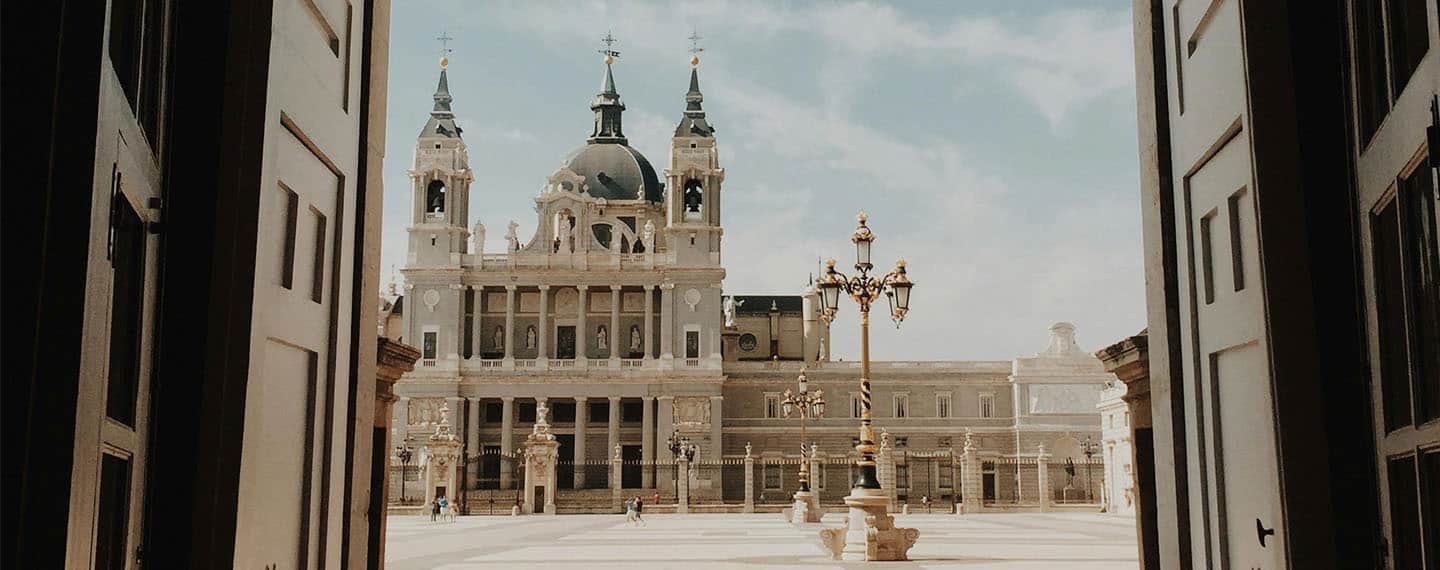Which is the only European capital with an Islamic origin? It is Madrid, which apparently morphed from the Arabic term mayrit (meaning ‘plenty of waterways’) as a result of the Muslim presence in large swathes of Spain between 711 and 1492. The city’s cathedral and its virgin, Our Lady of Almudena, take their names from the walled citadel, the al-mudayna. The cemetery that bears her name is the largest in Europe; at least 5 million people are said to lie, or have lain, under the earth there.
This and many other generally unknown facets of Madrid make Luke Stegemann’s Madrid: A New Biography (Yale University Press), published last month, a fascinating and engaging read. Yet the city, founded around 865AD on the site of a Visigoth settlement, did not become Spain’s capital until 1561 when King Felipe II installed the court there, ending the anomaly of having an empire but no capital city. His father Carlos I (Emperor Charles V of the Holy Roman Empire) had moved between Toledo, the Archbishopric and long-term seat of divine power, and Valladolid.
Even today more international tourists go to Budapest, Valencia, Barcelona and Istanbul than to Madrid, the EU’s fourth most populous metropolitan city, thankfully saving it, so far, from the overtourism that is hitting Barcelona to the anger of local residents.
There is no conclusive evidence that explains the move to Madrid. Felipe himself spent most of his time shut away in the stark monastery subsequently built in El Escorial, some 45km from the capital. The common assumption for choosing Madrid was that it is bang in the centre of Spain. Stegemann, who lives in Australia and visits Spain regularly since first coming to Madrid in the 1980s and staying for some years, suggests another reason might have been that ‘the arrival of the modern state meant it could not be beholden to the church, vital though that institution was’.
Divided into four sections –Village, Iron Age to 1616; Empire, 1516-1759; City, 1759- 1975; and World, Into the Twenty-first Century– this is a richly detailed book. Not surprisingly, José Luis Martínez-Almeida, the Mayor of Madrid, ever eager to promote the city, asked the author if he could present the Spanish edition in a public event, which he did. Stegemann draws on all manner of books, paintings and his own experiences. The bibliography takes up 11 pages and there are 564 notes. The book is as much a sweeping history of Spain as it is of one city, doing for Madrid what Robert Hughes, a fellow Australian, did for Barcelona in his 1992 book. As a 40-year resident of Madrid, I learned a lot.
Madrid was not part of the Grand Tour, the 17th– to early 19th century custom of travelling through Europe, with Italy as a key destination, mainly undertaken by wealthy young European men. Madrid might not have been given its due because, says Stegemann, it was the capital of a country ‘considered an outlier among the civilised on the basis of modes of behaviour or governance common elsewhere’. In other words, he suggests Madrid was a victim of the so-called ‘Black Legend’, the term used to describe anti-Spanish Protestant propaganda whose roots date back to the 16th century when Roman Catholic Spain’s European rivals sought to demonise the Spanish Empire and achievements (although as the French historian Pierre Chaunu commented: ‘The Black Legend is a reflection of a reflection, an image twice distorted, the external image of Spain as Spain itself sees it’).
Even today more international tourists go to Budapest, Valencia, Barcelona and Istanbul than to Madrid, the EU’s fourth most populous metropolitan city, thankfully saving it, so far, from the overtourism that is hitting Barcelona to the anger of local residents. Madrid attracted only 7 million of the 85.3 million international tourists that visited Spain in 2023. The city has over 1,800 monuments, 200 historic buildings and 70 museums, including the Prado, Thyssen and Reina Sofía, the three art temples within easy walking distance of one another, but most tourists just want sun, sand and sea.
Medieval Madrid was advanced for its time, with its own fueros, or code of laws, which pre-dated King John of England’s Magna Carta by a decade. These laws applied only to Christians, as Muslim and Jewish communities followed their own laws, although in cases of conflict the fueros took precedence.
We see the social world of Madrid’s popular classes, the majos and majas, in the late 18th and early 19th centuries through descriptions of the optimistic and pleasant paintings of Francisco de Goya (before his ‘Black Paintings’), who was one of the last great painters before the invention of photography. He died in 1828, two years after the oldest surviving photograph.
The city expanded considerably in the middle of the 19th century, attracting people from other parts of Spain, aided by the arrival of the train. By 1864, the Madrid-Irún line had been inaugurated, and the French border reached. Between 1852 and 1860, the population increased as much as in the previous 50 years, before hitting half a million by the end of the century, 200,000 more than in the 1860s.
Today, foreigners account for 19% of the city’s population of 3.5 million, many of them Latinos, earning Madrid the title of ‘European capital of Latin America’. Since 2019 the region of Madrid (population 7 million) has been the main motor of the Spanish economy, overtaking Catalonia, historically the powerhouse.
The city has had more than its fair share of violence, including the entry of the French during the Peninsular War, commemorated in two of Goya’s most famous paintings ‘The Second of May, 1808 and ‘The Third of May, 1808’ hanging in the Prado; the brutal bombarding of the Republican stronghold during the 1936-39 Civil War by Franco’s Nationalists, which caused the government to move to Valencia, and the killing of 193 commuters in 2004 when bombs placed on trains to Atocha exploded. It was Europe’s worst jihadist attack. Madrid also suffered the most killings after the Basque Country by the Basque terrorist group ETA (123 of the 853), including Admiral Carrero Blanco, Franco’s first prime minister, in 1973.
Unlike Spain whose national anthem has no words, Madrid put words to music for its official anthem, created in 1983. ‘Just to be something, I’ll be a madrileño’ goes one line. The city is a lot more than something.



